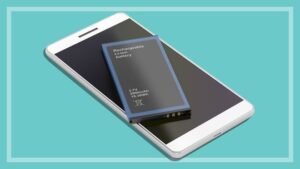Modern companies in the Czech Republic are increasingly considering how to reduce their environmental impact. This is not just a trend, but a conscious response to tightening environmental regulations, growing customer expectations, and the pursuit of energy efficiency. In a competitive environment with constantly rising resource prices, sustainable solutions are becoming a strategic asset. One of the key elements of this strategy is the adoption of eco-friendly equipment. In this article, we will explore the technologies and approaches already available to Czech businesses and how they contribute to building a green business.
Why Green Business Is Becoming the Norm
Environmental initiatives are no longer the domain of enthusiasts or small startups. Today, it is a strategic direction regulated by EU legislation, actively promoted at the government level, and expected by consumers. In the Czech Republic, more and more companies are implementing principles of sustainable development and conscious resource use. At the center of this movement is eco-friendly equipment — from office devices to energy systems.
Investing in green solutions means not only caring for the environment but also gaining long-term economic benefits. These include cost reduction, an enhanced company reputation, and preparation for future regulatory requirements.
Eco-Friendly Equipment: What It Is and Why It Matters
Eco-friendly equipment refers to devices and technologies that help businesses reduce energy consumption, use resources more efficiently, and minimize emissions into the environment. This includes replacing outdated, energy-intensive equipment as well as implementing new digital solutions for monitoring and optimizing processes.
For Czech businesses, this is especially relevant: since 2024, new requirements for building and process energy efficiency have come into force, and stricter ESG standards are expected in 2025. Companies that fail to adapt risk facing sanctions or limited access to funding.
Areas of Application for Green Equipment in Business
Offices and Administrative Buildings
Office sustainability begins with simple yet effective changes. LED lighting, automated temperature and ventilation systems, and low-energy devices all reduce costs and improve working conditions. More companies are using furniture made from recycled materials and implementing waste-sorting systems directly in office spaces.
Manufacturing Enterprises
Industrial companies are introducing systems for water reuse, emission filtration, and energy-efficient drives and pumps. Many businesses in the Czech Republic have already installed solar panels or heat pumps, especially in regions with strong solar potential. These investments usually pay off within a few years thanks to reduced electricity costs and access to government subsidies.
Transport and Logistics
For companies with vehicle fleets, switching to electric or hybrid cars is a growing priority. This reduces CO₂ emissions and helps meet environmental quotas. Warehouses are increasingly equipped with passive cooling systems, solar panels, and smart systems for lighting and climate control.
Practice in the Czech Republic: Who’s Already Going Green
One of the most well-known examples is Bernard Brewery, which installed solar panels and uses its own biogas plant for heating. Another case is the Lidl retail chain, which uses heat recovery refrigeration and constructs buildings according to energy efficiency requirements.
The tech company Nano Energies implements intelligent energy consumption management systems and helps other businesses optimize their energy budgets. All of this proves that eco-friendly equipment is not just for large corporations but also accessible to medium-sized businesses.
The Economic Benefits of a Green Approach
Although eco-friendly equipment often requires initial investment, it quickly pays off through:
- lower energy bills;reduced maintenance costs;
- access to tax incentives and subsidies;
- compliance with international standards, simplifying exports.
Companies that adopt green technologies also become more attractive to investors and employees, especially among younger generations for whom environmental values are essential.
Where to Start: Implementation Strategy
The first step is to conduct an energy audit. This helps identify where resources are being wasted and which areas need modernization most. The next steps may include replacing lighting, installing thermostats, and purchasing appliances with A++ energy ratings or higher.
It is also important to educate employees: only with conscious use will new equipment yield maximum results. Developing an internal environmental policy is also helpful for setting a course toward sustainable development.
Looking Ahead: ESG Standards Are Coming Soon
By 2030, all medium and large companies in the Czech Republic will be required to report according to ESG standards. This means not only transparency in environmental matters but also accountability for sustainable business development. Already today, implementing eco-friendly equipment offers a competitive advantage that influences a company’s value, attractiveness, and long-term stability.
Companies that begin the transition now will not only adapt to new conditions but also secure leadership positions in their industries.




Average Rating